#roman art
Text

Mosaic, III c- Roman Empire, from Tunisia, part of the province that Romans named Africa.
Neptune, the god of the sea, stands in his chariot drawn by two hippocampi. He holds a trident in his right hand, mid-3rd century AD, from Hadrumetum, Sousse Archaeological Museum, Tunisia
Photo: Carole Raddato (cc)
84 notes
·
View notes
Text

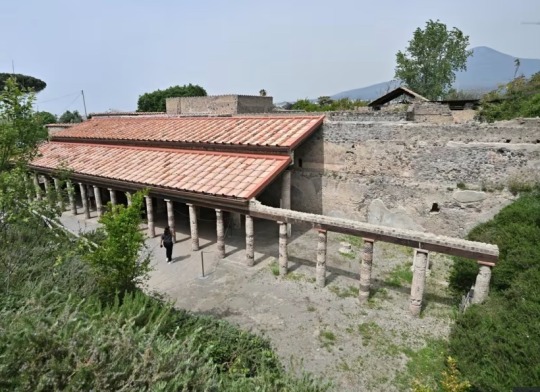
‘Ancient Roman’ Solar Roof Tiles Power Pompeii Villa
Ancient Roman ruins at Pompeii have been fitted with invisible solar panels, in a move that will contribute to the archaeological site’s sustainability efforts and cut costs. The innovative panels, which blend into the background by imitating traditional materials, were installed on the House of Cerere, on a thermopolium — a Roman snack bar — and on the House of the Vettii, which recently reopened following 20 years of restoration work.
“They look exactly like the terracotta tiles used by the Romans, but they produce the electricity that we need to light the frescoes,” said Gabriel Zuchtriegel, the director of the archaeological park of Pompeii, in a press release.
Each year, 3.5 million tourists explore the vast ruins of the ancient Roman city, which was buried by the eruption of Mount Vesuvius in 79 AD. But due to Pompeii’s size, energy bills are expensive and conventional methods of providing power across the site can threaten its appearance.

“Pompeii is an ancient city which in some spots is fully preserved,” Zuchtriegel said. “Since we needed an extensive lighting system, we could either keep consuming energy, leaving poles and cables around and disfiguring the landscape, or choose to respect it and save millions of euros.” The new technology will help the archaeological site to cut energy bills and make it more enjoyable, he added.
The invisible solar panels — or “traditional PV tiles” as they are technically known — were created by the Italian company Dyaqua. They can be designed to appear like stone, wood, concrete or brick, and hidden on walls, floors and roofs, according to Elisabetta Quagliato, whose family owns Dyaqua, in the press statement.
“We are an archaeological site but we also want to be a real-life lab for sustainability and the valorization of intangible heritage,” Zuchtriegel said. “Our initiative is not merely symbolic. Through the million tourists who visit us every year, we want to send a message to the world: cultural heritage can be managed differently and in a more sustainable way.”


Other locations in Italy using the invisible solar technology are the commune of Vicoforte in Italy and, soon, Rome’s contemporary art museum Maxxi. Public buildings in Evora, Portugal, and Split, Croatia will also install the panels, according to the press statement.
Pompeii’s recent use of these panels is just the beginning, Zuchtriegel said. “From now on, we will be taking this solution into account for all future renovation and restoration projects.”
By Garry Shaw.

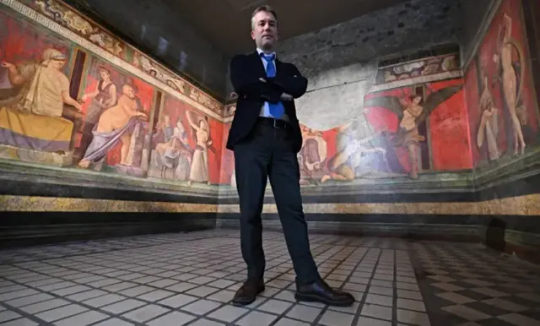
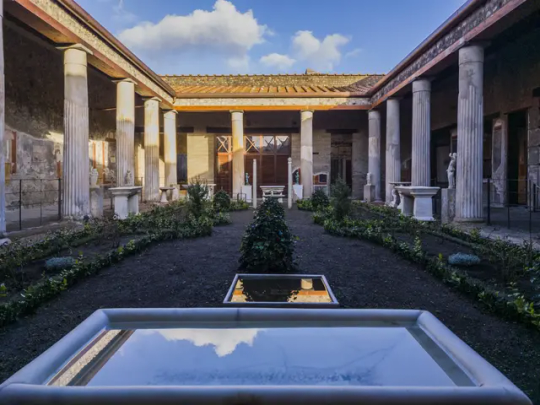
#‘Ancient Roman’ Solar Roof Tiles Power Pompeii Villa#House of Cerere#House of the Vettii#thermopolium#terracotta tiles#solar power#frescoes#mount vesuvius#ancient artifacts#archeology#archeolgst#history#history news#ancient history#ancient culture#ancient civilizations#roman history#roman empire#roman art
46 notes
·
View notes
Text

2 silver cups, part of the so-called Boscoreale treasure, buried by the eruption of Mt. Vesuvius.
#roman empire#ancient rome#pompeii#ancient history#ancient culture#ancient art#roman art#ancient roman art
4K notes
·
View notes
Text

Mosaic of sea creatures (the so-called "Fish Catalog") from the House of the Geometric Mosaics (VIII.2.16) at Pompeii. Artist unknown; ca. 100 BCE. Now in the Museo Archeologico Nazionale, Naples. Photo credit: Massimo Finizio.
#classics#tagamemnon#Ancient Rome#Pompeii#art#art history#ancient art#Roman art#Ancient Roman art#mosaic#sea creatures#NAM Naples
2K notes
·
View notes
Text
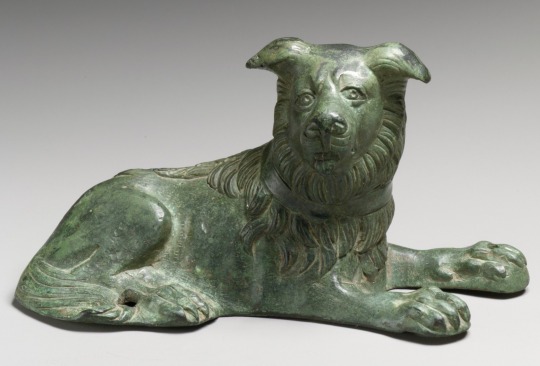
Bronze statuette of a dog
Roman
2nd-3rd century CE
#roman art#dogs#bronze#bronze statue#animals in art#ancient art#ancient people#ancient statue#statue aesthetic#aesthetic#beauty#ancient artifacts#artifacts#antiquities#beautiful animals#dogs of tumblr#cute dogs#modern art#art history#aesthetictumblr#tumblraesthetic#tumblrpic#tumblrpictures#tumblr art#tumblrstyle#artists on tumblr
1K notes
·
View notes
Text
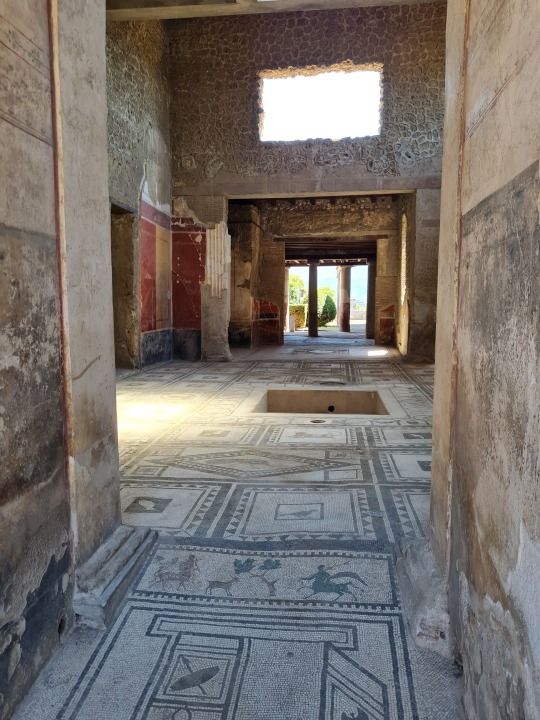


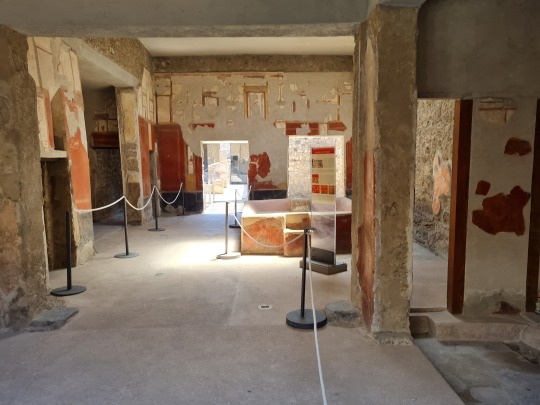
The ancient city of Pompeii, Italy
On the first photo is the house of Paquius Proculus.
On the last photo is the fullonica of Stephanus, a laundry worker who used the house as his workshop.
#pompeii#ancient rome#mosaics#roman art#roman history#ancient#ancient history#antiquity#archaeology#ancientmonuments#vesuvius#ancient art#history#architecture#culture#art#art history#travel#travel photography#traveling#photography#photographers on tumblr#explore#wanderlust#italy#italia#italytravel
448 notes
·
View notes
Text

Menelaus Carrying the Body of Patroclus or Ajax Carrying the Body of Achilles, 1st century AD, Roman copy after a Hellenestic bronze (ca. 200-150 BC), with modern restorations, marble, Loggia dei Lanzi, Florence.
#sculpture#art history#patroclus#achilles#menelaus#ajax#mythology#greek mythology#greek art#ancient greece#roman art#marble#florence
1K notes
·
View notes
Text
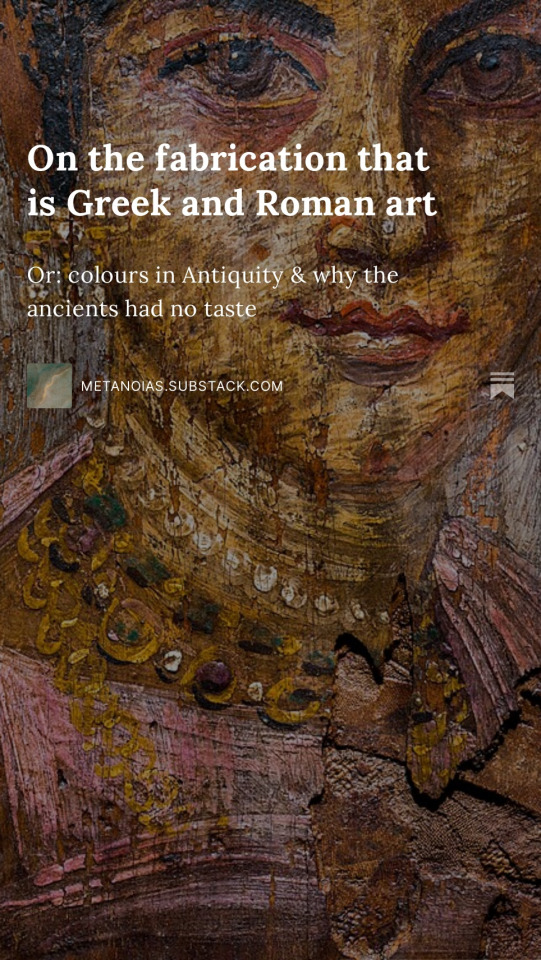
When you think of ancient Greece or the Roman Empire, visions of white togas, ivory temples and sand-coloured amphitheatres likely come to mind.
If so, you might be in for a surprise.
Because this off-white and eggshell-dominated palette, which inspired the pristine surfaces of Renaissance sculptures and the blank facades of Neoclassical buildings, is… a lie.
We now know the ancient world was steeped in colour. It was, perhaps, a tad too colourful for our modern sensibilities — even borderline garish at times.
Click here to learn why generations of scholars and artists believed in a monochrome Classical Antiquity and see historically accurate reconstructions of ancient statues and buildings in all their glorious peacockery.
#art#ancient art#ancient greece#ancient rome#ancient history#ancientmonuments#ancient cities#ancient civilizations#ancient sculpture#roman empire#roman art#art history#history#archeology#archaeology#colors#colours#colour#italy#greece#greek mythology#roman mythology#ancient greek#rome#rome italy#histoire#historic
709 notes
·
View notes
Text
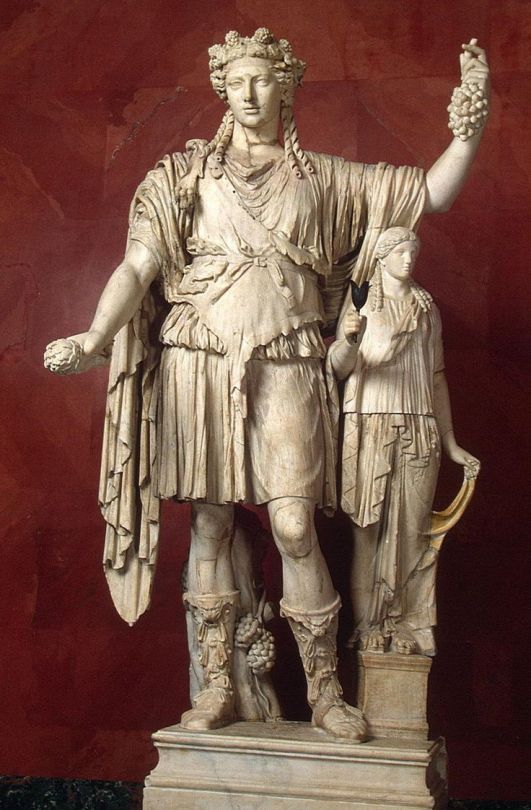
Roman marble statue of Dionysus (Bacchus), God of wine, patron of wine making.
Roman copy of a Greek original of late 4th century BC.
from The Collection of The Hermitage, St Petersburg
#roman art#dionysus#bacchus#marble statue#art history#ancient art#ancient artifacts#antiquities#antiquity#ancient rome#roman history#roman empire#roman republic#rome#greek art#greek mythology
424 notes
·
View notes
Photo
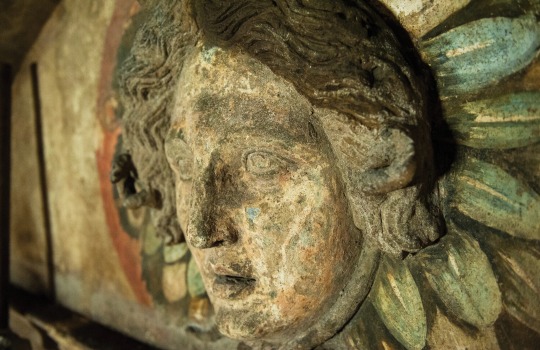


Medusa from Ipogeo dei Cristalli, naples, IT
4K notes
·
View notes
Text
Ancient Necklace with Mosaic Glass Beads, from the Eastern Mediterranean, c.100 BCE-100 CE: this necklace is composed of 30 glass beads, most of which are decorated with stylized faces

From the John Paul Getty Museum:
The beads are made of multi-colored opaque glass and are decorated with heads and floral designs. The necklace is in good condition; some beads are chipped or cracked.

The exact origin of this piece is unknown, but it can be traced back to the Eastern Mediterranean, where it was likely made by a Greek or Roman artist.
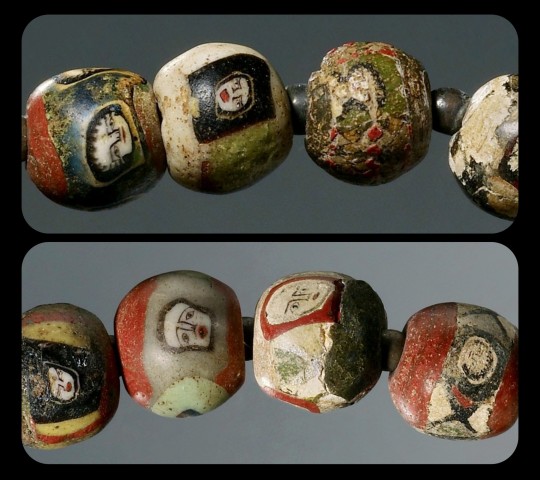
Each bead has a width of about 1.2cm (roughly half an inch); they're decorated with remarkably intricate details, and each face is depicted in its own unique style.

Sources & More Info:
John Paul Getty Museum: Necklace with Mosaic Glass Beads
#archaeology#artifact#history#ancient history#art#greek#roman#ancient art#antiquity#jewelry#beading#glass art#mosaic#crafting#greek art#roman art#eastern mediterranean#ancient#necklace#fashion#style#classical archaeology
233 notes
·
View notes
Text

Head of Oceanus, detail of a mosaic from Baths of Themetra near Sousse, beginning of the 3rd century AD, Sousse Archaeological Museum, Tunisia
By: Carole Raddato (CC)
24 notes
·
View notes
Text



Roman Glass Bowl
1st century B.C.
The J. Paul Getty Museum.
#Roman Glass Bowl#1st century B.C.#glass#ancient glass#ancient artifacts#archeology#archeolgst#history#history news#ancient history#ancient culture#ancient civilizations#ancient rome#roman history#roman empire#roman art#blue
2K notes
·
View notes
Text

Head from a bronze statue of the Roman emperor Alexander Severus (222-235 AD) from Ryakia, Archaeologica Museum, Dion
391 notes
·
View notes
Text

Mummy portrait (wax encaustic on sycamore wood) of a girl, from the Fayum region of Egypt. Artist unknown; ca. 120-150 CE (reign of Hadrian or Antoninus Pius). Now in the Liebieghaus, Frankfurt am Main, Germany. Photo credit: Carole Raddato.
#history#ancient history#Ancient Egypt#Roman Empire#Roman Egypt#art#art history#ancient art#Roman art#Egyptian art#Romano-Egyptian art#mummy portrait#encaustic painting#Liebieghaus
2K notes
·
View notes
Text
villa of livia's garden room fresco, from palazzo massimo

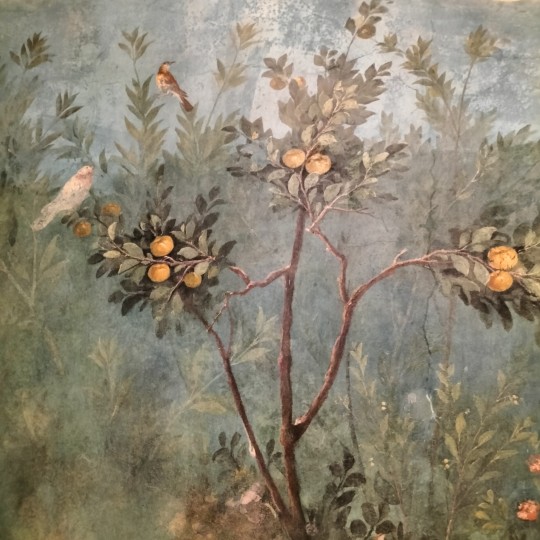
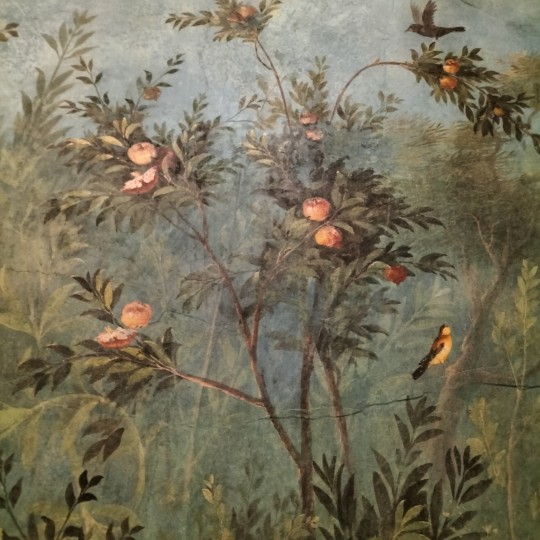


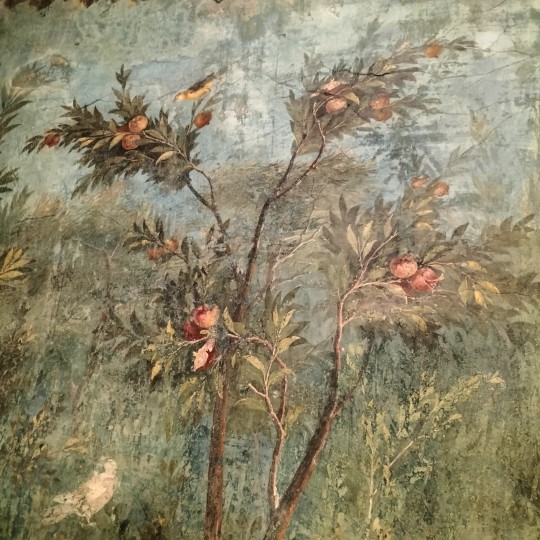
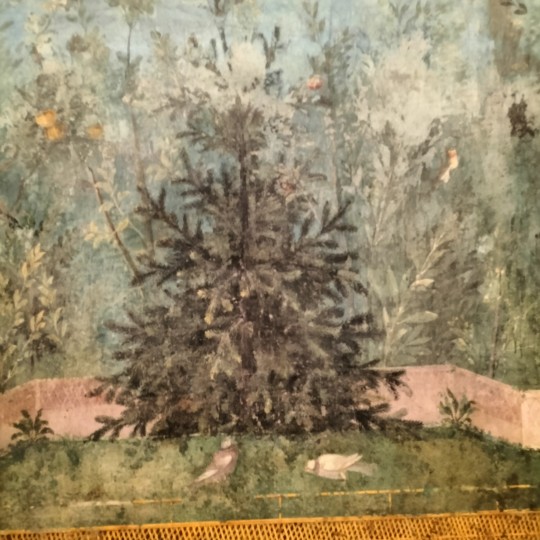

known as ad gallinas albas (of the white hen) because of pliny the elder's tale in his naturalis historia, recounting the myth of livia, newly bethroted to octavian augustus, having a white hen holding a laurel branch in its beak dropped into her lap by an eagle, interpreted as an omen of good fortune.
full view on tiktok
#archaeoblr#archaeology#roman archaeology#roman art#ancient rome#roman history#roman fresco#ancient art#villa of livia#villa di livia#octavian augustus#rome#roma#palazzo massimo#museum#roman museum#paiawon.txt#art history#historyblr#artblr#when in rome#studyblr#tagamemnon
822 notes
·
View notes